#long-jawed orb weavers
Text


Long-jawed orb-weaver (Tetragnathidae family)
Species Tetragnatha extensa
#spider#spiders#Tetragnathidae#my standards would normally be higher but the lighting was bad and I’ve never found one before so#this is what we got lol#my photos#orb weavers#long-jawed orb weavers
8 notes
·
View notes
Text
The Stretch Spiders Have an Interesting Lifestyle
The Stretch Spiders Have an Interesting Lifestyle introduces readers to these interesting little spiders. It points out several reasons that they are unique, and provides photos that show those features.
Hang Up
Oftentimes out by my ponds, I find these long, thin spiders hanging in their horizontal webs above the water. Sometimes the webs are attached to the walls of the pond and others they are spun around the surrounding vegetation. Sometimes I even find the spiders running along the surface of the water just like the fishing spiders can. They are small spiders, and they tend to be kind of…
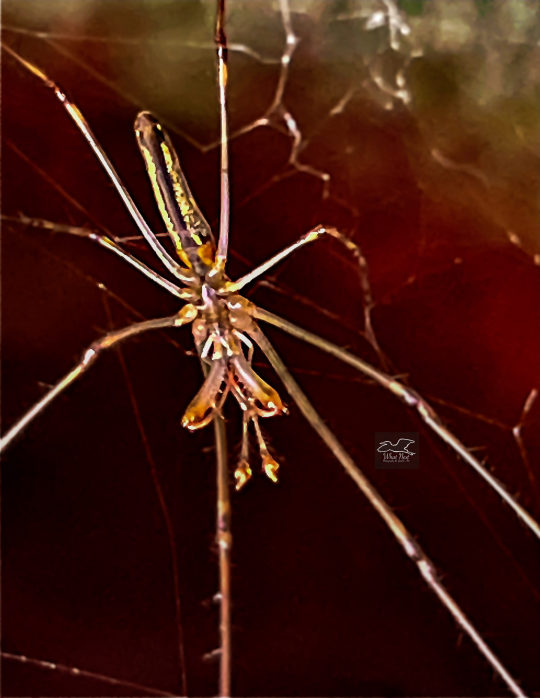
View On WordPress
#elongated spiders#Florida long-jawed orb weavers#Florida orb weavers#Florida stretch spiders#Florida Tetragnathidae#long-jawed orb weavers#orb weavers#photography#small spiders#spider photographs#spider photography#stretch spiders#Tetragnathidae#water spiders
1 note
·
View note
Text
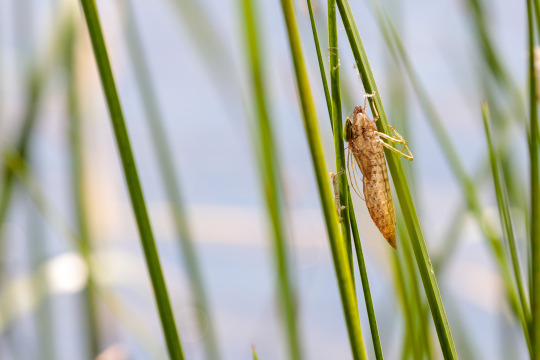
Exuvia with a Guest
A long-jawed orb-weaver spider sitting on top of a dragonfly exuvia, along the edge of the water at Felmersham Gravel Pits.
#arachnid#arachnids#bedfordshire#canon#canonuk#felmersham#felmersham gravel pits#invertebrate#invertebrates#long-jawed orb-weaver#minibeast#minibeasts#nature#nature reserve#outdoors#spider#spiders#summer#tetragnatha extensa#wildlife#wildlife trust#wildlife trusts
4 notes
·
View notes
Text


[PHOTOS TAKEN: MAY 17TH, 2023 | Image IDs: Two photos of a green, black, orange, and yellow long-jawed orb weaver on a web, with a blurry grey background /End IDs.]
I still think these guys' abdomen look a lot like Master Chief's helmet
#Long jawed orb weaver#Orb weaver#Spiders#Spider#Arachnids#Arachnid#Archnophobia#Arthropods#Bugblr#invertebrate#photos#photo#Wasp House Sights
5 notes
·
View notes
Text
Close up of the beautiful Venusta Orchid Orbweaver (Leucauge venusta)



I finally was able to get a good shot of her without my camera unfocusing, and I am so grateful I could. The yellow and silver pattern on her abdomen is iridescent, which is amazing to see up close.
Its name comes from Charles Darwin himself, directly meaning “with a gleam” and “beautiful” respectively. There is also a slight chance this is an L. argyrobapta, as the females are near indistinguishable, but locally this type is more likely.
Orchid Spider colours can range drastically, and can even get them mistaken for a black widow. But, as almost always, these orbweaver spiders are non aggressive and are medicinally harmless.
#Leucauge venusta#orchid spider#orb weaver spider#spiders#nature#bugs#entomology#original photographers#Tetragnathidae#long-jawed spider#araneae#arachnids#American species#my photos
10 notes
·
View notes
Text
Thin Camouflage
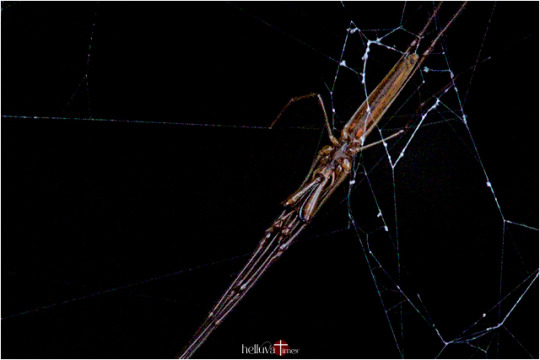
A Long-jawed Orb-weaver spider assuming its classic camouflage posture in the Gardens by the Bay. Photo credit: Eleanor Chua.
This was captured against the dark reflection of a pond. The exposure was biased 2-1/3 stops darker to keep highlights. Despite this, shadows had still need to be further darkened in post for this final image.
#photographers on tumblr#arthropod pics#canon eos rp#canon photography#flora fauna#long-jawed orb-weaver spider#macro photography#photography editing#photography tips#spider photos#tamron 16-300mm#Tetragnatha montana
1 note
·
View note
Text


@elviratheepic submitted: Here's a little guy I found while doing laundry today! It picked a great spot to sit - the orange against the blue is so pretty. I'm not much of a bug identifier, but I assume it's a male orb weaver of some sort. If you could tell specifics from my less than perfect photos that'd be cool (found in south [removed]), but if not, let's just admire this little orange guy together :)
Please remove my location, thanks!
That blue really makes their color pop! Pretty. Looks to me like a Eurasian armoured long-jawed spider, Metellina segmentata. So an orbweaver, yes, but a long-jawed one in the family Tetragnathidae rather than the standard orbweavers in Araneidae :)
76 notes
·
View notes
Text
How to Identify Cross Orbweaver Spiders
Originally posted on my website at https://rebeccalexa.com/how-to-identify-cross-orbweaver-spiders/. Click here to learn more about the How to Identify article series.
Name: Cross orbweaver spider (Araneus diadematus), also known as cross spider, European garden spider, et. al.
Range and typical habitat(s): Native to much of Europe, sporadically found in temperate areas of Asia, introduced to North America, particularly the west coast and northeast United States.
Distinguishing physical characteristics (size, colors, overall shapes, detail shapes) and behaviors: Fall is just around the corner, and if you’re looking for more eco-friendly seasonal decorations, the cross orbweaver is the perfect fit! While these spiders have spent all summer chowing down on insects, by September they’ve gotten big enough to be quite visible on their large orb webs.

A mature female cross orbweaver spider.
Both sexes are a variable combination of orange, yellow, brown, and/or gray, and they all have white cross-shaped markings on the dorsal (upper) side of their rather large, oval-shaped abdomens. The legs are tan to orange with darker brown or gray stripes. Like many other web-weaving spiders, cross orbweavers tend to rest in the center of their web with their head facing down and their legs flexed rather than straight, though the fourth pair in the back may sometimes be extended somewhat. Their legs are covered in fine hairs with a fuzzy appearance. They are also known to perch on nearby leaves and twigs.
Like other members of the family Araneidae, the orb-weavers, these spiders have four pairs of eyes. Females are larger than males, reaching up to 1″ long in exceptional individuals, while males usually top out at 1/2″ or less. A close examination shows that males can also be distinguished by large pedipalps with swollen ends. These are little appendages nestled between the chelicerae (jaws) and the first pair of legs. Males use the pedipalps in mating displays, and to also pass sperm to the female. A courting male needs to be careful, as females will engage in cannibalism.
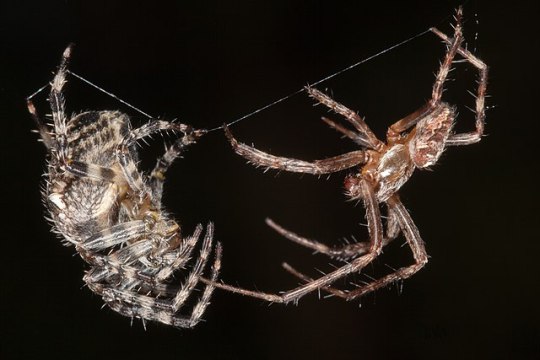
A male cross orbweaver (right) carefully approaches a female (left) with the intent to mate.
The eggs laid by females the previous fall hatch in spring, releasing several dozen (or more!) tiny yellow spiderlings into the world. While they make webs as soon as they find a good location, these young spiders often end up as prey for other animals themselves. Cross orbweavers generally live no more than a year, though females die shortly after laying their eggs, and males are often eaten by their mates.
The web is made of a series of overlapping threads of silk like the spokes in a wheel, with a spiraling orb starting at the center and working its way outward. A cross orbweaver’s web may be quite large, and the central orb may at times exceed two feet in diameter. They are not picky about where they set up shop, and are often found near homes and other buildings, where they are quite adept at catching flying insects that blunder into the web. If threatened, these spiders shake their web vigorously, and are not prone to bite unless handled roughly. They may dry bite in self-defense, choosing not to use venom. Their venom is not considered dangerous to humans.

Other organisms it could be confused with and how to tell the difference: There are several other Araneus species that look quite similar to the cross orbweaver. Of these, the most similar is the four-spot orbweaver (Araneus quadratus) has less variegated orange, green, or brown abdomen with four small white spots on it rather than a cross, though they have similarly striped legs. It is found only in Europe.
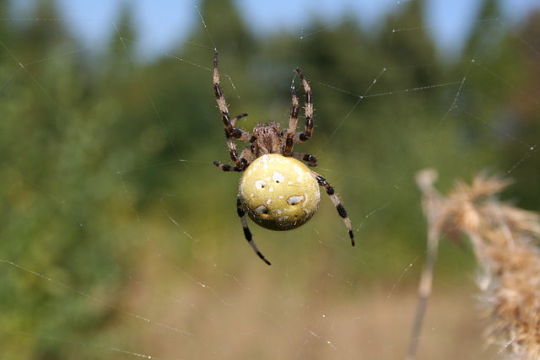
Araneus quadratus
The cat-faced spider (Araneus gemmoides), also known as the jewel orbweaver, is of similar size and color variation to the cross orbweaver. However, its abdomen has two pronounced points on top that look rather like a cat’s ears. Araneus gemma (not pictured) is also sometimes called the cat-faced spider or the gem-shaped spider, and it has a similarly shaped abdomen but tends to be paler in color. Both of these species are primarily found in the western half of temperate North America.

Araneus gemmoides. By Trucmuche04, CCA-SA-3.0
Anything else worth mentioning? Because the cross orbweaver is not native to North America, it competes with native spiders for food. This is especially concerning as insect populations have plummeted in recent decades due to pesticide use and habitat loss. It is often found in urban areas and other places with lots of human habitation, and is considered an invasive species in the Bay Area. They are considered harmless to humans.
Further Reading:
Cross Orbweaver Spider
Cross Orbweaver
Cross Orbweaver (Araneus diadematus)
Spiderspotter: Cross Orbweaver
Did you enjoy this post? Consider taking one of my online foraging and natural history classes or hiring me for a guided nature tour, checking out my other articles, or picking up a paperback or ebook I’ve written! You can even buy me a coffee here!
#spider#spiders#cw spiders#spider tw#cross orbweaver#orb weaver#arachnids#arthropods#invertebrates#bugs#wildlife#animals#wild animals#nature#nature identification#invasive species#biodiversity#science#scicom
52 notes
·
View notes
Text

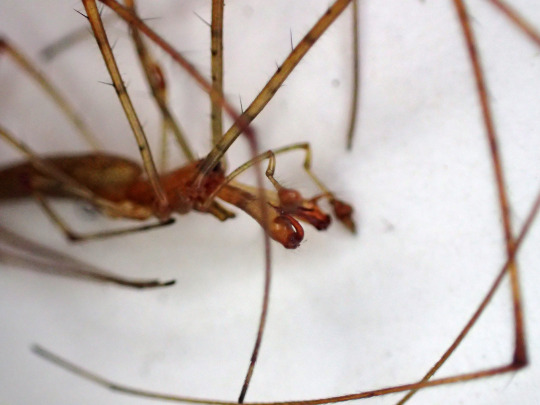
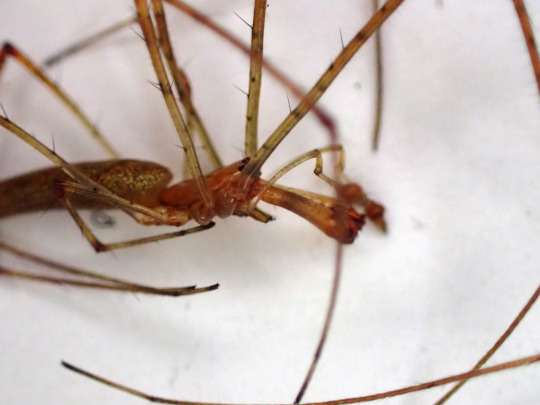
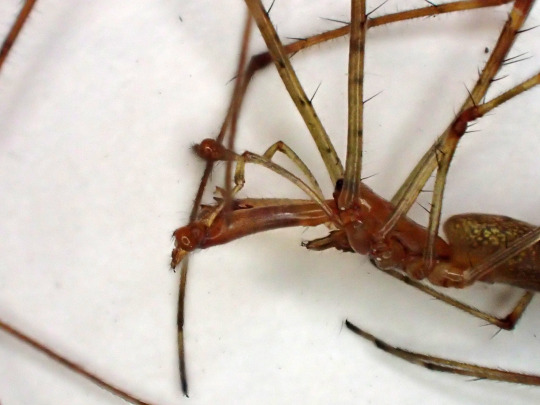
long-jawed orb weaver (Tetragnathidae)
30 notes
·
View notes
Text
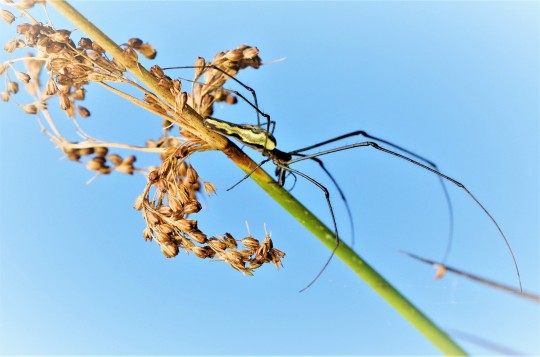
Long-jawed Orb Weaver
#spiders#arachnid#spider#long jawed orbweaver#nature photography#wildlife photography#photographers on tumblr#nature
21 notes
·
View notes
Text
OH MY GOD I got another hc for you, this time it's more hannibal focused :D
Quick warning, I will be talking about spiders a lot in this but I wont show any pictures, just so you know :)
Idk why but I think hed be a big fan of bugs, specifically spiders
Even more specifically, hed like tarantulas and orb weavers the most
Hed have a small collection of pets, 3 tarantulas and one golden orb weaver.
His number one favorite is a female cobalt blue tarantula he named sappho
Why name a spider after a lesbian icon? Because any attempt to breed her would just end up in her eating all of the males no matter what. She would refuse to breed no matter how perfect the male was. He joked that shes a lesbian and thus named her Sappho
Despite cobalt blues being very skittish, sappho actually is very comfortable with hannibal and likes it when he handles her.
She likes sitting on his shoulder while he reads or plays the piano
He loves spending time with her since it's so incredibly unusual for a spider to be this affectionate and comfortable
Not to mention shes just jaw droppingly gorgeous
Clarice doesnt mind his spiders and shows some curiosity for them, though shes still pretty spooked by them
Hannibal has tried to get her to fight her fear by letting her try feeding his spiders
She would hold a hissing cockroach in some long tongs and hold it up to his martinique pink toe tarantula named Coral
Her hands shook a lot but she tried to stay steady. Hannibal would encourage her and hold her hand.
Coral pounces on the roach making clarice jump with a yelp but she managed to hold steady enough that she didnt disturb Coral
She released the tongs and stumbles back, eyes popping out of her skull
H: Easy easy! You did it!
He catches her and holds her tight as she waits for her pulse to return to a slightly safer speed
She laughs after a few seconds at her dramatic reaction and hugs hannibal from the side to which he happily reciprocates
After a moment of laughter hannibal goes over to check on coral
Shes sitting at the entrance to her burrow, happily slurping away at the now dead cockroach
He smiles and closes her enclosure
H: you did quite well. Shes very happy with her meal.
C: oh I'm glad, I slaved away at it with my blood sweat and tears. (She laughs)
#clarice starling#hannibal#hannibal lecter#silence of the lambs#sotl#the silence of the lambs#thomas harris#hannibal the cannibal#clannibal#hannibal au#tw spiders
8 notes
·
View notes
Note
tell us about your favorite spider(s?)
HI ILY FOR ASKING ME TO DO THIS
(these are probably not gonna be as interesting as you expected because it's partially just common, everyday spiders) (also putting a read more bc i understand that some people may not want to see a bunch of spider pictures in their feed)
First of all, my absolute fave, the pelican spider family (archaeidae):
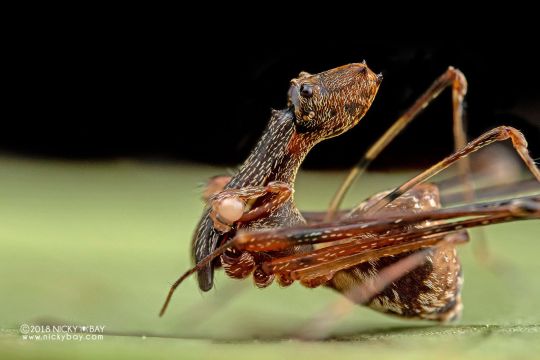

I love these creepy little fucked up individuals so much. Look at them. They're under 1 cm long (!!!!!) and use their goofy ass giraffe neck + big ass jaws to hunt insects. Their Wikipedia page is extremely short + every article you'll find repeats the same 10 sentences and that makes me angry because I need to know more.
Also, orb-weavers!! There's this oak spider living at our house and they're incredibly cute. I drop an insect into the web anytime I go by, since this little guy made themself at home right next to a door handle.
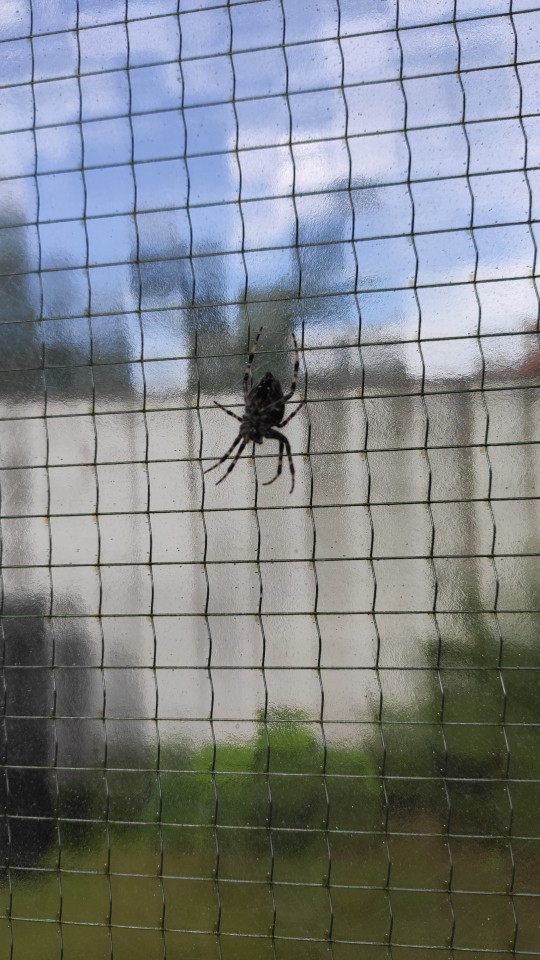
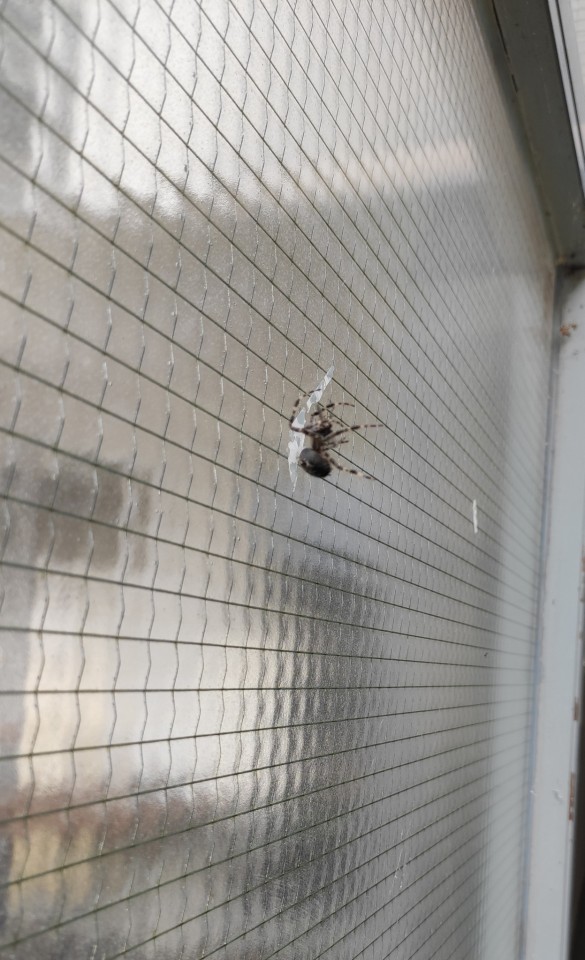
Pholcus opilionoides are from the cellar spider family, and their no. 1 self-defense tactic is to just Shake A Lot. They're often mistaken for daddy long-legs, but they're two different arachnids.
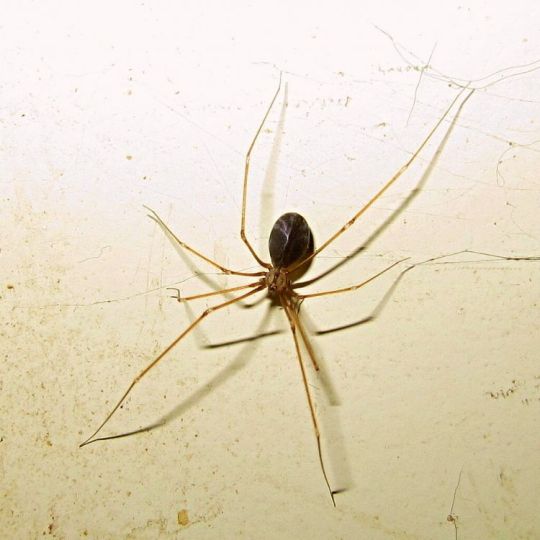
And, last but not least, the salticidae (jumping spider) family. Look at these two guys from the onomastinae and salticinae sub-families. Very polite looking. Friend shaped. I want to hold them in my hands.
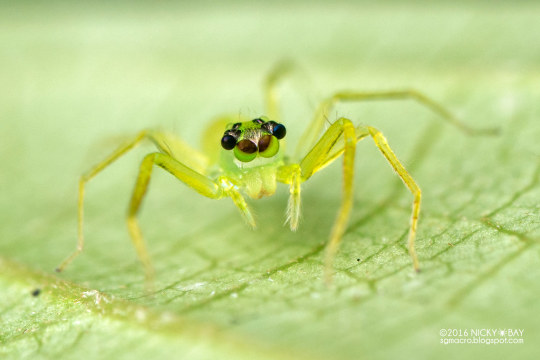
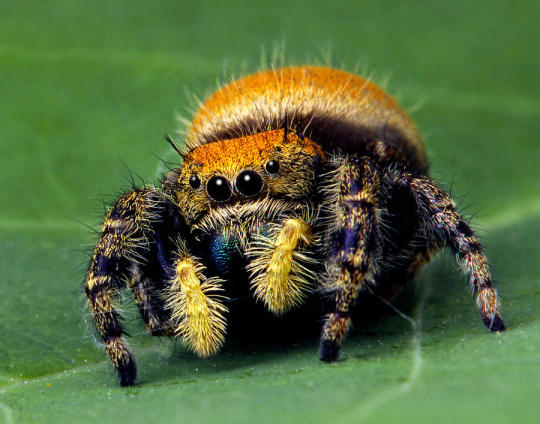
#asks#spiders#myrmaplata plataleoides deserves a shoutout for mimicking a specific type of ant that's famour for tasting absolutely awful#so these spiders basically evolved to look like these ants because predators don't like eating them#*famous#i am not going back and retyping all of that to fix a spelling error
13 notes
·
View notes
Text
Orb-weaver spiders - Oil Paint
Orb-weaver spiders are members of the spider family Araneidae. They are the most common group of builders of spiral wheel-shaped webs often found in gardens, fields, and forests. The English word "orb" can mean "circular", hence the English name of the group. Araneids have eight similar eyes, hairy or spiny legs, and no stridulating organs.
The family has a cosmopolitan distribution, including many well-known large or brightly colored garden spiders. With 3,067 species in 177 genera worldwide, the Araneidae comprise the third-largest family of spiders (behind the Salticidae and Linyphiidae). Araneid webs are constructed in a stereotypical fashion, where a framework of nonsticky silk is built up before the spider adds a final spiral of silk covered in sticky droplets.
Orb webs are also produced by members of other spider families. The long-jawed orb weavers (Tetragnathidae) were formerly included in the Araneidae; they are closely related, being part of the superfamily Araneoidea. The family Arkyidae has been split off from the Araneidae. The cribellate or hackled orb-weavers (Uloboridae) belong to a different group of spiders. Their webs are strikingly similar, but use a different kind of silk.

#spider#macro#nature#spiders#tarantula#arachnid#spiderman#spidersofinstagram#tarantulas#photography#naturephotography#macrophotography#tarantulasofinstagram#arachnids#spiderweb#insects#arachnidsofinstagram#tarantulalove#halloween#art#tarantulasoftheworld#insect#wildlife#tarantulakeeper#a#marvel#spidersoftheworld#ara#photooftheday#spinne
2 notes
·
View notes
Text
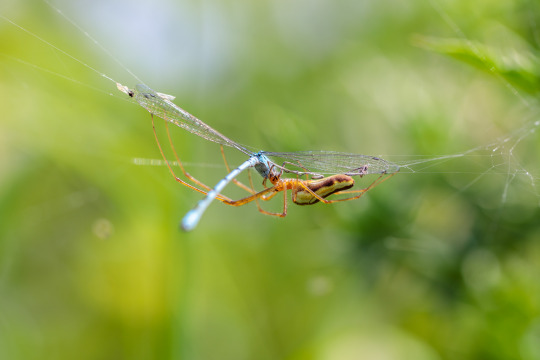
Long-jawed Orb-weaver
A long-jawed orb-weaver spider feeding on a damselfly caught in its web, at RSPB Fen Drayton Lakes.
#arachnid#arachnids#cambridgeshire#canon#canonuk#fauna#fen drayton#fen drayton lakes#invertebrate#invertebrates#long-jawed orb-weaver#minibeast#minibeasts#nature#nature reserve#outdoors#rspb#spider#spiders#spring#tetragnatha extensa#wildlife
5 notes
·
View notes
Text
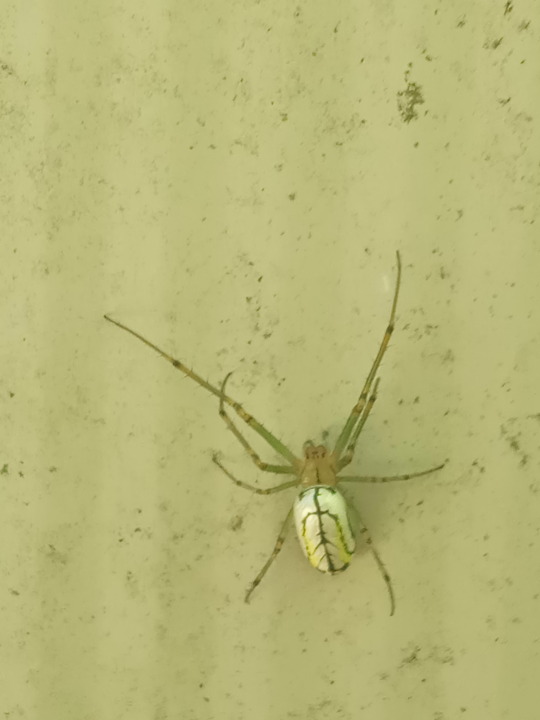
A spider of the genus Leucauge! I particularly like these types of spiders because they almost look like cracked glass ornaments :0
#Leucauge#Long-jawed orb weaver#orb weaver#Spider#Spiders#Arachnid#Arachnids#Arachnophobia#Arthropods#Photo#Photos#Wasp House Sights#Tetragnathidae
16 notes
·
View notes
Text

Behold, the Long Jawed OwO Weaver
I saw a Long-Jawed Orb Weaver, and it had an OwO on its face. So, I drew it having an actual OwO on its face. It's got 2 mouths now.
1 note
·
View note